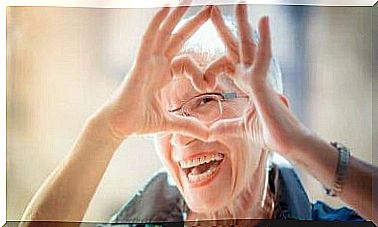Have You Heard Of White Coat Hypertension?

White coat hypertension is when a person’s blood pressure is higher than normal when measured in a clinical setting (doctor’s office, clinic, hospital, etc.). However, when they measure blood pressure outside a clinic, it goes back to a regular reading.
Although white coat hypertension has been recognized for many years, there are some things about it that are still unclear. But first, let’s look at some key concepts that will help us better understand the phenomenon of white coat hypertension.
What is blood pressure?
Blood pressure is the force that the blood exerts against the artery walls. This pressure is an indispensable part for the blood to circulate through the blood vessels and provide oxygen and nutrients to all the organs in the body. This allows the body to function properly.
Blood pressure has two components :
Systolic blood pressure : Maximum value of blood pressure during systole (when the heart contracts). It refers to the effect of pressure exerted on the wall by the vessels of the blood pumped from the heart.
Diastolic blood pressure : The lowest value of blood pressure when the heart is in diastole, or between heartbeats. It depends mainly on peripheral vascular resistance (blood flow in peripheral arterial vessels).

Abnormalities in blood pressure
People may have the following abnormalities or dysfunctions related to blood pressure:
Hypertension : An increase in blood pressure, either systolic or diastolic. High blood pressure, along with high cholesterol and smoking, are the main (and most preventable) causes of cardiovascular problems.
Hypotension : A reduction in blood pressure to below normal limits. The person with low blood pressure tends to become exhausted and dizzy more easily.
White coat hypertension
As we said, white coat hypertension occurs in some people when they go to the hospital or other medical environment, such as clinics. We can define white coat hypertension as a reaction to perceived danger when the patient is in front of a doctor. The reaction is a complex and stereotypical response to an emotional stimulus. It feels like a threat.
The reaction consists of an increase in blood pressure and heart rate when the doctor begins to take the patient’s blood pressure. The doctor’s presence during the reading triggers it.
Interestingly, if the person measuring the blood pressure is a friend, a family member or the patient themselves, they do not react that way. Nurses can also trigger it, but less often. The setting where blood pressure is taken also plays a role, as we mentioned.
What are the criteria for diagnosing white coat hypertension?
The European Society of Cardiology (ESC) proposes the following diagnostic criteria for white coat hypertension:
- Blood pressure readings above 140/90 mmHg in the clinic at three different visits.
- At least two blood pressure readings outside the clinic below 140/90 mmHg.
- Lack of damage in certain organs.
- An average ABPM less than 135/85 mmHg. ABPM stands for Ambulatory Blood Pressure Monitoring.
What are the characteristics of people with white coat hypertension?
Patients prone to white coat hypertension tend to have the following characteristics:
- Blood pressure readings at the clinic measure from 140/90 mmHg to 159/99 mmHg.
- Woman.
- Non-smokers.
- Recently diagnosed hypertension.
- Absence of left ventricular hypertrophy. Left ventricular hypertrophy is when the heart is enlarged and the walls are thick. It is usually a consequence of hypertension.

What causes white coat hypertension and white coat effect?
To date, no one has clearly identified any mechanisms that could explain this phenomenon. But we know of some clues that we are going to explain now.
Increased blood pressure in clinical setting due to a warning reaction
All our hearts beat faster and blood pressure increases when we perceive something as a threat (stress). For people with this condition, this threatening or stressful stimulus is a clinical setting.
It causes them to experience the same physical changes as a stress response. In this case, neither cholesterol nor any other physical cause is causing the hypertension. The cause is stress itself.
So, this effect is the result of a conditioned response to a clinical or hospital environment, and not to the “white coat” itself. We understand a conditioned response as a reflexive reaction or response learned before a stimulus. It has the name “conditioned” because it happens after it is conditioned by something: one associates a stimulus with something else.
What is conditional response?
A well-known example of conditional responses Pavlov’s dog. The dog learned to drool when given an unnatural stimulus not normally associated with food: the sound of a bell. He then responded because he had associated the sound of the bell with food in his mouth.
The body shows conditioned responses after “conditioned stimulus”. With reference to the case at hand, the conditioned stimulus is the clinical or hospital environment, and not the white coat. The response is increased activity in the sympathetic nervous system and decreased activity in the parasympathetic nervous system.
The sympathetic nervous system causes nervousness, restlessness, stress, etc. The parasympathetic nervous system is responsible for the opposite. It is responsible for feelings of calm and relaxation.
With white coat hypertension, there is greater activity in the sympathetic nervous system. This causes an increase in heart rate and blood pressure. But evidence indicates that the main cause of increased heart rate is the reduced activation of the parasympathetic nervous system.
White coat effect against white coat hypertension
The terms “white coat effect” and “white coat hypertension” are not the same. The white coat effect refers to a temporary increase in blood pressure that occurs in response to warning. The clinical environment is what mainly triggers the alarm.
In the case of white coat hypertension, we are talking about a clinical diagnosis of hypertension in a medical setting while the patient has normal blood pressure readings during their daily activities. The white coat effect is not related to basal blood pressure and may occur in patients with or without hypertension.
As we have seen, white coat hypertension is mainly generated and controlled by psychological factors. Basically, a person’s blood pressure and heart rate increase when faced with a conditioned stimulus such as a hospital or clinical setting. Given that, the treatment should also be psychological.









